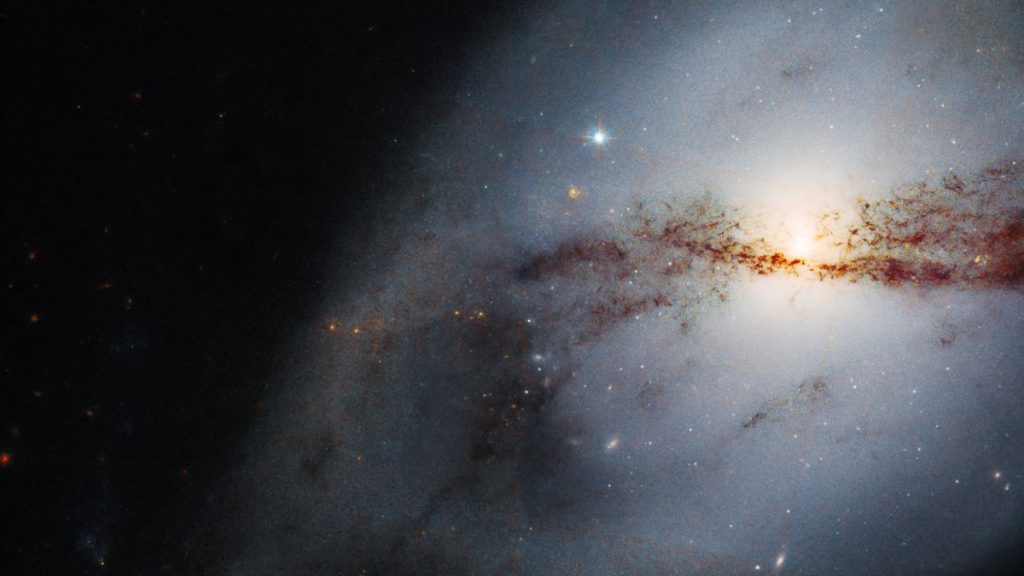
Hubble Space Telescope images twisted galaxy shaped by a big neighbor (Image Credit: Space.com)
This fresh Hubble Space Telescope image looks like a gassy disaster unfolding deep in space.
The image shows the galaxy NGC 3718, which NASA officials say is a “highly disturbed spiral,” meaning its formation was disrupted. As the galaxy gets into the gravitational well from the neighboring galaxy NGC 3729, that galactic interaction pulls NGC 3718 into an S-shaped warp. The galaxies are separated by 150,000 light-years, with NGC 3729 not shown in this view from the Hubble Space Telescope.
“Hubble’s view of this portion of NGC 3718 shows the sinuous, twisting dust lane in detail as it sweeps by the core of the galaxy and curves into the surrounding gas,” NASA officials said in a May 24 statement (opens in new tab). “Both the galaxy’s gas and dust lane are similarly distorted into this unique configuration.”
Related: The best Hubble Space Telescope images of all time!
NGC 3718 is also called Arp 214, recognizing its placement in the 1966 Atlas of Peculiar Galaxies, constructed by Halton Arp to look at galaxies with unusual structures.
The Hubble telescope was focusing on the nucleus of the galaxy, which is hard to see because of the amount of dust in the way. Infrared light allowed Hubble to peer through “as part of a study of the central regions of disk-shaped galaxies, with prominent bulges of stars in multiple environments,” NASA officials said.
The goals of the study included learning how supermassive black hole masses might be related to galactic “bulges” about the center, as well as how star formation happens throughout a galaxy.

NASA’s James Webb Space Telescope aims to extend Hubble’s generation of work by peering at galaxies close to the start of the universe. Webb is expected to start work this summer.
Some of Webb’s research will focus on matters such as galactic variety, mergers and collisions, as well as more details on galaxies’ relationships with supermassive black holes, according to NASA (opens in new tab).
Follow Elizabeth Howell on Twitter @howellspace (opens in new tab). Follow us on Twitter @Spacedotcom (opens in new tab) or Facebook.





